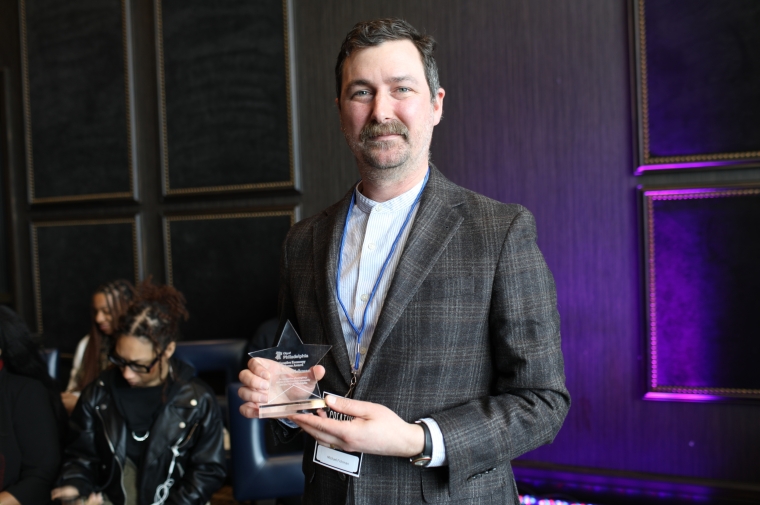March 22, 2017
Stuart Weitzman School of Design
102 Meyerson Hall
210 South 34th Street
Philadelphia, PA 19104
Get the latest Weitzman news in your Inbox
Areas
Allison came to Penn after working as a postdoctoral fellow at Monash University in Melbourne, Australia, with the Cooperative Research Centre for Water Sensitive Cities. She is teaching an incredibly unique course here at Penn called Sensing the City, which introduces students to Arduino, an introductory, open source electronics platform.
The Internet Of Things and urban sensors has become an important tool for understanding a host of natural resource, land use and resource allocation problem in cities. One great example is Chicago's Array of Things. Sensing the City helps students think about this type of engineering solution and its relevance for Planning.
We asked Allison 5 questions about her research interests and teaching:
1. What specific instance of data driven governance inspired you to do what you do?
Years ago, I was a GIS analyst at a landscape architecture and planning firm. I typically worked on large (~10,000 acre) subdivisions in rural areas. To guide the subdivision designs, I created McHargian-style spatial data overlays. It was a fantastic way to get a handle on these large landscapes and uncover an environmentally-sensitive plan. At the same time, it was challenging to link the available environmental data to specific design interventions. The data I used was often coarse in both space and time. This issue of matching the spatiotemporal scales of data and design continues to drive many of my research questions.
2. What is your favorite class to teach and why?
I love them all! But, I'll tell you about two favorite aspects of my data class, Sensing the City. Firstly, it is amazing to watch the students become makers. As everyone begins to build Arduino projects, they also begin to look at the world a little differently. They check out the electronics around them, ask how the sensors work, how the circuits connect, and how they can DIY it. For many students, it's a completely new type of creativity. It can be very empowering. Secondly, we collect a lot of raw data in the class. Prior to the class, many students assume that the datasets we often download online are true, objective, and correct representations of the world. After working with the sensors, they begin to see that there are many assumptions embedded in data.
3. What will be the most important data driven skill set for urban planners in 10 years?
Specific languages and technologies come and go. Ten years ago, I was using a completely different set of tools than I use now. Ten years from now, I expect that shift to be even greater. So, the most important skill isn't a language or technology. It's a deep understanding of when and how to use data.
4. If you could have any dataset in the world, what/where/who would it describe and what would you do with it?
My answer to this question would likely change monthly. At this moment, I wish I had household-level, panel data on the presence of lead in drinking water. Stay tuned!
5. What advice do you have for graduate students interested in a data-driven approach to governance?
Data can be a useful way of identifying problems and defining solutions, but it is by no means the only way. The most powerful data-driven propositions leverage the best available data sets and most advanced analytics, while also acknowledging limitations. Understanding problems and solutions in a sociopolitical context is an excellent way to identify limitations. Take a general urban history or theory course and as many subject-specific classes as you can.
Thanks Allison! You can follow Allison on Twitter.


 Expand Image
Expand Image


